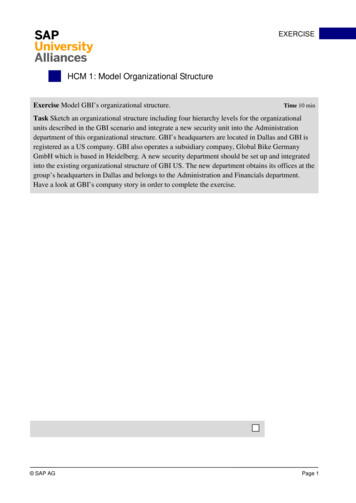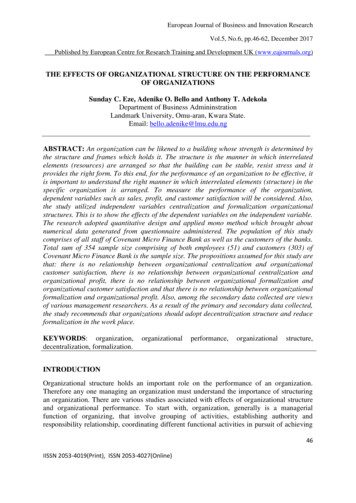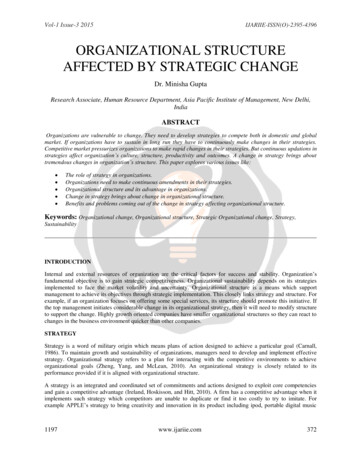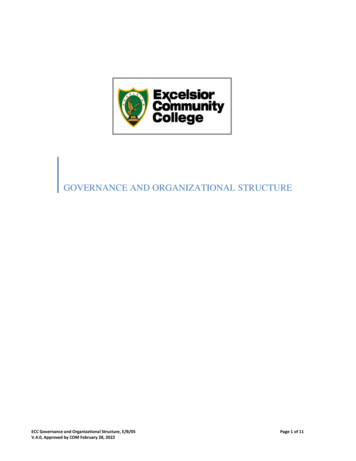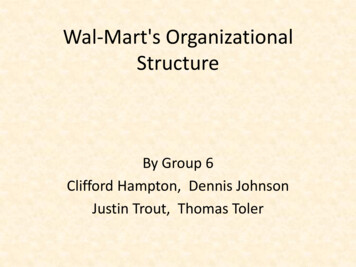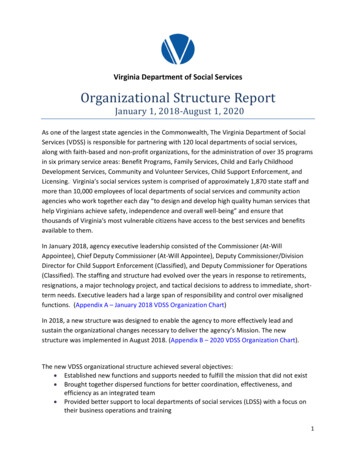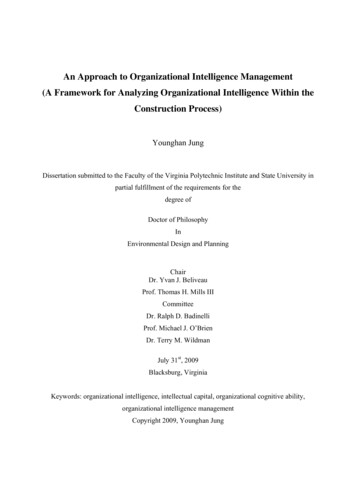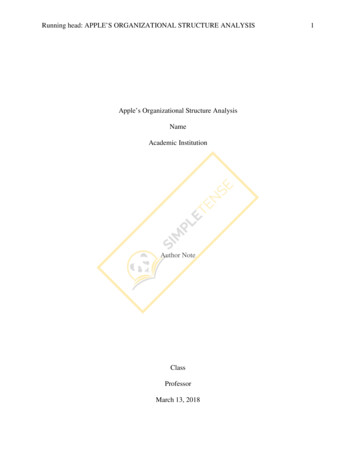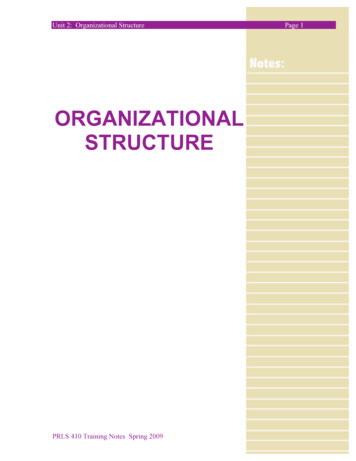
Transcription
Unit 2: Organizational StructureORGANIZATIONALSTRUCTUREPRLS 410 Training Notes Spring 2009Page 1
Unit 2: Organizational Structure[image from: ��s the boss? What is my job? What do other people do?How is the authority and responsibility distributed? Thesequestions are all answered in the way the organization is formallyand practically structured.1. ORGANIZATIONAL THEORYThe most important concept in classical organizational theory isthat of HIERARCHY.1. Scalar Principle: Authority is established at the top of theorganization and flows in a vertical line down to the lower levels ofthe structure.2. Unity of Command: Ultimately one body is responsible, andno individual should be accountable to more than one other forany given task or area of responsibility.3. Span of Control: The number of employees that onemanager can supervise.Depends ona) the capability of the supervisor,b) the skills and commitment of theemployees being supervised,PRLS 410 Training Notes Spring 2009Page 2
Unit 2: Organizational Structurec) the difficulty and level of uniformity of thetasks, andd) managerial approach and trust.Another important idea in organizational theory is that ofDEPARTMENTALIZATION.Why departmentalize?a) to break down or specialize work tasksb) to simplify coordination tasksc) to maintain better controlOn what basis do we departmentalize?a)b)c)d)by functionby placeby clienteleby productDepartmentalization is described and illustrated by means of theORGANIZATIONAL CHART.How do levels in the organizational chart relate to workresponsibilities?Principles in developing an organizational chart:1.2.3.4.5.Hierarchy, unity of command, span of controlSymmetryDescriptive job titles / consistency at levelsAdvisory and administrative support lines1 box may represent individual or unitChart Making ToolsMicrosoft OfficeMost versions of the Microsoft Office suite (PC or Mac) includeOrganization Chart, a relatively easy and robust program for creatingorganizational charts.Omni GraffleOmni Graffle is also a powerful chart making tool that takes advantage ofthe Mac’s graphics capabilitiesPRLS 410 Training Notes Spring 2009Page 3
Unit 2: Organizational StructurePage 4Organizational Function: Reality Check“An organizational chart is the way things look until the ball issnapped.”The practical rigidity of an organizational structure places thatstructure at a position somewhere along a continuum betweenmechanistic (rigid) and organic (living, flexible).Factors in deciding position along the continuum:1. Specialization2. Standardization3. Formalization4. Centralization5. Configuration6. FlexibilityMECHANISTIC ORGANIZATIONAL STRUCTURES1.2.3.4.5.6.7.8.9.10.Goal segmented to fit specialization and functionsPrecisely defined rights, obligations and methodsConcern over "Doing your job" rather than achievingoverall goalSupervisor acts as biased refereeControl, authority and communication follow hierarchicalpatternsAssumption that higher-ups are better able to makedecisionsInteraction follows hierarchical linesInstructions from superiors govern work activityLoyalty a condition of membershipPrestige locally based (hierarchy)PRLS 410 Training Notes Spring 2009
Unit 2: Organizational StructureORGANIC ORGANIZATIONAL STRUCTURES1.2.3.4.5.6.7.8.9.10.Expertise is goal oriented, not job orientedAssignments are based on relevance to job, not onglamourPeople ask "What needs to be done?" rather than "Whatam I responsible for?"Problems are not pushed to a different levelWide network of control, authority and communicationAd hoc locus of expertiseInteraction is more lateral than verticalAdvice more than instruction and decisionsPeople committed to organizational taskPrestige attached to expertise and external affiliationsMECHANISTIC ORGANICBureaucratic / Linking Pin / Systems / Matrix / Decentralization / Federation / Free FormSTRUCTURAL MODELS1. Bureaucratic Model"an authority system where supreme authority restssomewhere above the individual, and the individual's responsibilityconsists, basically, of obeying orders and performing those taskswhich are inherent in the particular job."PRLS 410 Training Notes Spring 2009Page 5
Unit 2: Organizational Structure2. Linking Pin ModelWithin each work multi-level division there is a position that linksto other work divisions.3. Systems ModelEach task of a specific process is organized into afunctional unit with an organizational structure best suited to theaccomplishment of that task.PRLS 410 Training Notes Spring 2009Page 6
Unit 2: Organizational Structure4. Matrix ModelMerges two or more departmentalization criteria within oneorganizational structure. Program or project teams are drawnfrom other functionalunits.5. Decentralization ModelForm is identical to bureaucratic structure, but decisionmaking structure is different. Attempts to disperse decisionmaking control.6. Federation ModelPRLS 410 Training Notes Spring 2009Page 7
Unit 2: Organizational StructureManager serves primarily as a facilitator. All units areindependent and autonomous, but held together (perhaps onlytemporarily) to achieve a common goal.7. Free Form ModelNo rigid role definition or structure. "cautious anarchy"PRLS 410 Training Notes Spring 2009Page 8
Unit 2: Organizational Structure Page 7 PRLS 410 Training Notes Spring 2009 4. Matrix Model Merges two or more departmentalization criteria within one organizational structure. Program or project teams are drawn from other functional units. 5. Decentralization Model Form is identical to bureaucratic structure, but decision-
